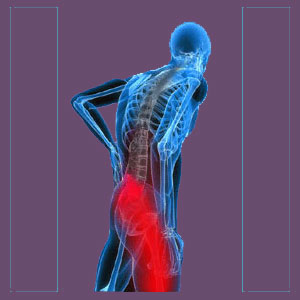
Piriformis pain in athletes affects one of the most common patient demographics diagnosed with symptoms which are motivated by this important muscle. Athletes constitute the majority of new piriformis syndrome and injury diagnostic pronouncements each year, but are these diagnostic verdicts accurate?
Athletes typically benefit from great preventative and interventional healthcare. However, we have seen a huge discrepancy in certain types of conditions that are diagnosed in athletes far more than seems logically possible. Piriformis pain is certainly one of these conditions which has left many in the healthcare community wondering about the accuracy of most piriformis syndrome diagnoses in athletic individuals.
This explorative essay focuses on the diagnosis of piriformis pain in athletic individuals of both professional and amateur designations. We will discuss the nature of most of these diagnoses and why some of these theories might be misguided when it come to actually explaining pain.
Piriformis Pain in Athletes – Piriformis Syndrome
Piriformis syndrome describes compression of the sciatic nerve by the piriformis muscle. In athletes, this is one of the main explanations offered for sciatica expressions that have been proven not to originate in the lower spinal anatomy. Piriformis syndrome can range from minor annoying symptoms to completely disabling pain that can bench any athlete for an extended time frame.
Piriformis syndrome can exist due to injury to the piriformis muscle, as well as various other reasons that might cause interactions between injured or structurally-atypical anatomical components that influence the piriformis muscle. However, piriformis syndrome can also exist due to ischemia of the muscle, depriving it of oxygen and creating painful expressions, especially when it is working during stressful athletic exertions.
Symptoms of piriformis syndrome in athletes will be expressed in the lower body, including pain, tingling, weakness and paresthesia in the buttocks, hip, groin, legs and/or feet. Symptoms can occur unilaterally or bilaterally in less common scenarios.
Piriformis Pain Due to Athletic Injury
Direct trauma to the piriformis is muscle might create localized pain that does not necessarily compress or even influence the sciatic nerve, but is still symptomatic due to functional demands on the muscle. The lateral rotator group is the area where the piriformis muscle is located, deep in the anatomy of the buttocks/hip region. This muscular grouping attaches to the sacrum and the upper leg bone, passing through the pelvis to help regulate and control movements of the hip and leg in relation to movements of the torso.
Injury to the piriformis is usually unilaterally expressed, although trauma to one side does increase the chances of suffering collateral damage to the other side, as well, particularly if the symptoms are not addressed and the athlete continues to push their body past its point of endurance.
Localize piriformis injury will produce pain during various activities, including weight bearing, weight transference and any exertion that requires use of the legs, such as running, jumping or performing dexterous acts with the lower body. Pain will usually be directly linked to such movement and will resolve or markedly decrease when stress is removed from the muscle, such as when the patient reclines and rests.
Piriformis Pain in Athletes Discussion
Athletes are diagnosed with piriformis-related pain more than any other patient demographic. Why does this occur? Is it possible that the piriformis is truly susceptible to injury and pain given physical exertion? Not likely. The design of the lateral rotator group of muscles is extraordinary and almost miraculous in its strength and durability. There are likely to be other explanations. This idea led us to pursue deeper research into many diagnosed cases of piriformis syndrome and injury in athletes and we have discovered some interesting findings in our clinical experience:
We do observe a much higher rate of true piriformis syndrome in athletes. We also have seen a higher rate of direct localized piriformis pain in athletes, typically blamed on injury. However in these latter cases, injury can not usually be verified by MRI testing, nor does the athlete typically have a memory of injuring themselves, making the theory of trauma as the cause of pain highly subjective.
For athletes with structural issues that need resolution, physical therapy and self-managed exercise regimens are the most indicated and effective path towards relief. Athletes should not rely on injections or drug therapies, as these modalities are hazardous to health and might increase the chances of further injuring the piriformis under anesthetized stress. However, when traditional medical care fails, there is often a logical reason dealing with the true underlying causation of pain.
We have used knowledge therapy techniques to treat many athletes who did not have the benefit of a confirmed structural diagnosis, as well as some who did, and found that the majority will completely recover once they recognize the underlying psychoemotional mechanisms for pain. It is no surprise that so many athletes suffer exacerbated pain in response to perfectionism, internal drive to succeed and excel, as well as the pressures of competition. When athletes can recognize the power of these contributing factors, most will recuperate from their pain without any medical intervention being necessary at all.
Piriformis Pain > Causes of Piriformis Pain > Piriformis Pain in Athletes





